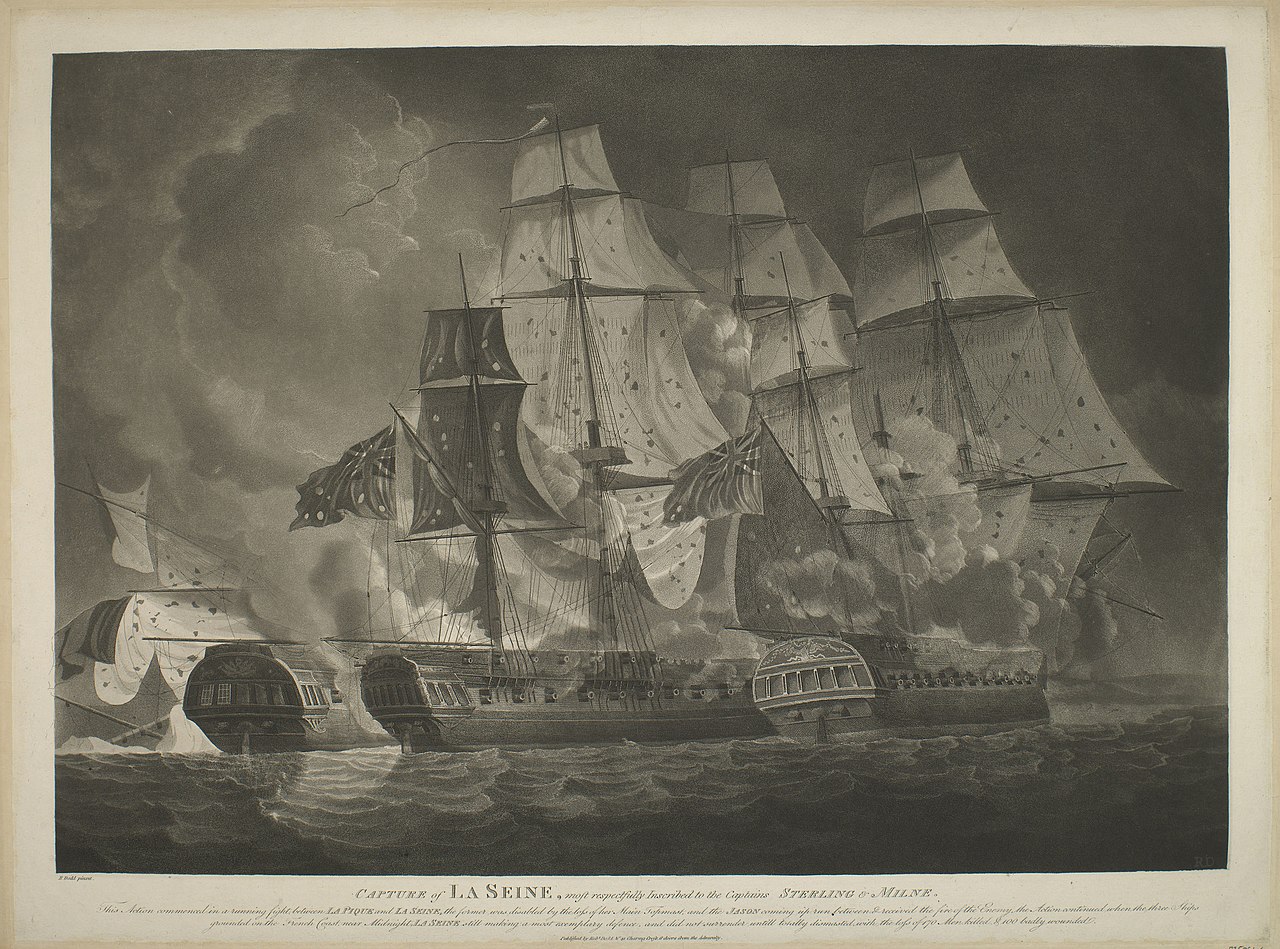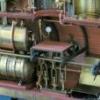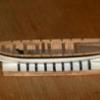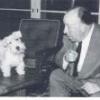-
Posts
2,245 -
Joined
-
Last visited
Reputation Activity
-
 Beef Wellington reacted to Candice in HMAV Bounty by Candice - Caldercraft - Scale 1:64
Beef Wellington reacted to Candice in HMAV Bounty by Candice - Caldercraft - Scale 1:64
This week has been a great exercise in patience for me, both in terms of my knee's recovery and in terms of the next section of planking! Fortunately I at least have something to show for the latter ;P. I'm learning to accept that planking often requires a "two steps forward, one step back" approach in order to achieve the best fit, particularly as a beginner. I've found that my initial measurements were definitely "more guidelines that actual rules" and need constant readjusting. I'm learning to be more flexible and recognize problems earlier so that they can be fixed before they escalate.
The next ten planks took me days of solid work to get right but I'm loving the resulting hull curvature that is starting to take shape!
Any advice on easy DIY ways to hold the stern planks in place while they dry, apart from physically holding them while watching TV or something ;P? My peg method lasted a sum total of 5 planks!
-
 Beef Wellington reacted to Vane in HMBV Granado by Vane - Caldercraft - Scale 1:64
Beef Wellington reacted to Vane in HMBV Granado by Vane - Caldercraft - Scale 1:64
The pre bending tool makes it a bit easier... but I hope i got this right. It feels that everything else will be relying on getting this in exact position!
-
 Beef Wellington got a reaction from Gahm in US Brig Syren by Gahm - Model Shipways
Beef Wellington got a reaction from Gahm in US Brig Syren by Gahm - Model Shipways
Those are just stunning Thomas, well done, such precise work at a small scale.
-
 Beef Wellington reacted to Mirabell61 in Zeesboot by Mirabell61 - FINISHED - scale 1:24 - wooden fishing vessel c. 1876 - small
Beef Wellington reacted to Mirabell61 in Zeesboot by Mirabell61 - FINISHED - scale 1:24 - wooden fishing vessel c. 1876 - small
Feedback for Eberhard and John,
this is the result for the bilge access lifting plates, (as already mentioned it is a compromise though, providing 8 hatches )
The black lines are preserved by a layer of Humbrol Enamel clear varnisch. I will varnish the complete floor area, when the first layer over the lines is cured out....
Nils
-
 Beef Wellington reacted to Mirabell61 in Zeesboot by Mirabell61 - FINISHED - scale 1:24 - wooden fishing vessel c. 1876 - small
Beef Wellington reacted to Mirabell61 in Zeesboot by Mirabell61 - FINISHED - scale 1:24 - wooden fishing vessel c. 1876 - small
status of build :
fastening a steel strop to the centerboard, a structure board for passing main mast through and stiffening out centerboard. Aft section floor with outcut for motor well.
The main mast is a dummy in lack of 8 x 8 mm square bar for checking the alignment of the mast sockets
Nils
These two pics are out of my own book "Zeesboote" by Hermann Winkler, it shows the hard work even at night (note the petroleum lamp), to check out what the catch has brought
the Zeese-netting will be dumped into the buckets below
I found that the steel galvanised strop is nor flexible enough for the centerboard pulley tackle, will change to adequate rope zise
the prop shaft will be shortened to allow length of motor and coupling
the motor will look somehow like this sample, one cylinder glow head for gas oil fuel, water cooling, complete with gearbox
-
 Beef Wellington reacted to Mirabell61 in Zeesboot by Mirabell61 - FINISHED - scale 1:24 - wooden fishing vessel c. 1876 - small
Beef Wellington reacted to Mirabell61 in Zeesboot by Mirabell61 - FINISHED - scale 1:24 - wooden fishing vessel c. 1876 - small
many thanks Michel and Geert,
and also thanks to all the "likes"..
Michel,
I`m not sure what size the ballast-rocks have, but I`m sure that smaller pebbles would stray around in the under floor sections in rough waters. I would appreciate any pics for examle, if anyone has...
Geert,
yes, the water filled boxes contained live fish, I just made some ventilation airholes into each lid to provide sufficient oxygen...
Nils
-
 Beef Wellington reacted to Gahm in US Brig Syren by Gahm - Model Shipways
Beef Wellington reacted to Gahm in US Brig Syren by Gahm - Model Shipways
I spent some time building a jolly boat prototype for the Syren. I wanted to find out what it would look like to hang a jolly boat from her rear davits, and also to experiment with a few techniques needed for some of the boat details (also applicable to the long boat construction). To build the jolly boat I bought the Master Korabel kit. This is a kit for a highly detailed jolly boat, which additionally is very similar to the jolly boat plans shown in the ‘Anatomy of the Ship – Frigate Diana’ book. However, the scale of the kit is 1:72 and therefore not directly usable. As the kit does not come with a useful plan I put the 3 sheets of laser cut pear- and ply-wood on a copy machine, increased the copy by a factor 1.25x to get to the correct boat dimensions and then built the boat according to this ‘plan’. The different boat building stages are shown in images 1 – 7. Images 8 and 9 present the finished result. Image 10 shows a direct comparison between the jolly boat built from the kit at scale 1:72 based on the kit provided laser cut parts and the scratch built ‘enlarged version’ potentially suitable as Syren jolly boat.
Thomas
Image 1
Image 2
Image 3
Image 4
Image 5
Image 6
Image 7
Image 8
Image 9
Image 10
-
 Beef Wellington reacted to Vane in HMBV Granado by Vane - Caldercraft - Scale 1:64
Beef Wellington reacted to Vane in HMBV Granado by Vane - Caldercraft - Scale 1:64
The whales have been marked out. This kit design differs from others i have done where u start with doing the complete whales by adding 3 strips of 1x4mm walnut in 2 layers. After that you start with the 2nd planking.
-
 Beef Wellington got a reaction from Old Collingwood in HMS Diana by Vane - Caldercraft - Scale 1:64
Beef Wellington got a reaction from Old Collingwood in HMS Diana by Vane - Caldercraft - Scale 1:64
Wow, you really have your work cut out for you with your Caldercraft selection. As you point out, this is probably one of the older 'modern' kits out there so there are plenty of opportunities to improve one the kit out of the box as you see fit. The Artois class really are one of the best looking ship types available in a model (IMHO!). Look forward to seeing you start, there is quite the 'Diana' club right now on MSW so plenty of other builds to get pointers from.
Cheers
-
 Beef Wellington reacted to Blue Ensign in HM Cutter Alert by Blue Ensign - FINISHED - Vanguard Models - 1:64 scale
Beef Wellington reacted to Blue Ensign in HM Cutter Alert by Blue Ensign - FINISHED - Vanguard Models - 1:64 scale
Post 10
Reworking the Transom:-
I have already departed from the kit arrangement by incorporating lower side counter timbers.
1453
My next step is to glue the stern transom pattern (49) this also is planked with thin box strip. I think the stern pattern will stand a slight beefing up and the Box wood cladding will do the job.
1462
Initial trial fitting of the transom showed that there was no margin along the bottom of the gun ports inboard, to allow for the deck planking, which would otherwise rise above the framing.
The one clear photo in the build guide shows such a margin, but that is without the 1mm planking applied to the platform deck above the counter.
I had to tweak the transom piece by adding a strip along the bottom to raise it slightly above the deck level.
Once this is done it is clearer to see how the upper side timber (75) which incorporates the boom crutch, can be accommodated.
1463
With the Transom piece fitted, I now have a solid edge to work the Upper side timbers.
I think the inboard framing detail of the kit Transom configuration is a little sparse, having only the four vertical counter timbers, which are either side of the stern ports.
1460
Using Boxwood strip I added the transom beam which runs across the top of the gun ports, and a Tafferal capping strip.
1464
1459
Fixing Capping rails to the transom involves an eclectic mix of clamping items.
These small additions, replicate more accurately the stern framing of the cutter, and imho greatly improve the look of the model, or will once I've fettled it.
1476
The modifications require making new side pieces including the crutch. The original piece is shown in the centre.
1481
These are attached to the transom and will be fine tuned on the model.
1482
A second layer lower Side piece is glued to the hull. These are quite intricate pieces that butt up to the upright and curve and twist down to meet the wale aft edge.
1486
Still very much wip but it is progressing as I hoped, and with the structure now there I can decide on the paint scheme and add the second layer wale timbers.
B.E.
05/08/2019
-
 Beef Wellington reacted to Valeriy V in Varyag 1901 by Valeriy V - FINISHED - scale 1:75 - Russian Cruiser
Beef Wellington reacted to Valeriy V in Varyag 1901 by Valeriy V - FINISHED - scale 1:75 - Russian Cruiser
I continue to build - conning tower and navigation bridge.
-
 Beef Wellington reacted to Peta_V in AVOS by Peta_V - FINISHED - Master Korabel - scale 1/72 (exclusive kit) - Russian tender
Beef Wellington reacted to Peta_V in AVOS by Peta_V - FINISHED - Master Korabel - scale 1/72 (exclusive kit) - Russian tender
Some more Iron works.
1. Rolling chock (with testing tack)
2. Fastening of the stern-post to the keel
3. Horse (it will be blackend later)
-
 Beef Wellington reacted to paulsutcliffe in HMS Sirius 1797 by paulsutcliffe - 1:48 - POF from NMM plans
Beef Wellington reacted to paulsutcliffe in HMS Sirius 1797 by paulsutcliffe - 1:48 - POF from NMM plans
Also started work in the channels, mizzen below, air gaps at the back
-
 Beef Wellington reacted to Peta_V in AVOS by Peta_V - FINISHED - Master Korabel - scale 1/72 (exclusive kit) - Russian tender
Beef Wellington reacted to Peta_V in AVOS by Peta_V - FINISHED - Master Korabel - scale 1/72 (exclusive kit) - Russian tender
I have finished water ways. Before I move on with other fittings I put inside of the hull under first layer of oil.
-
 Beef Wellington reacted to Trident Model in HMS ALERT 1777 by Qi Gang - Trident Model - 1/48 scale
Beef Wellington reacted to Trident Model in HMS ALERT 1777 by Qi Gang - Trident Model - 1/48 scale
Hello, everyone, we haven't updated the development progress for a long time. When we produce metal parts, we find that one part has been unable to meet our requirements. This problem will be solved in the next few days. We tested a blackening agent for zinc alloy. Here we share it with you. It consists of three parts, 1. Surface activation (I personally think low concentration hydrochloric acid) 2. Blackening agent (I don't know what ingredients) 3. Surface isolator (similar to varnish), because the liquid can't be mailed, I think you can buy similar products locally. The development is expected to be completed in the next week. Thank you again for your attention.
-
 Beef Wellington reacted to Mark P in Deck mounted ring bolts for relieving tackles and stoppers
Beef Wellington reacted to Mark P in Deck mounted ring bolts for relieving tackles and stoppers
Good Morning Jason;
Regarding the AOTS volume, David White was/is a very knowledgeable person, and if he says that there were separate ringbolts, I would tend to take his word for it. My only qualification on this matter is that I do not remember ever seeing any such ring/eye bolts in either models or books. However, as has been said before, absence of evidence is not evidence of absence.
Concerning duality of function, it is very unlikely that train tackles would need to be rigged at the same time as the ship was anchored. This is only likely in a defensive posture in face of superior force, which was rare. So the same ring/eye bolt could perform different functions as required.
Having said that, you are quite correct that Lever's stoppers do look pretty permanent. My best advice would be to do as you think best, but with the balance of probability being as per David White's volume if you are building a model from the late 18th century or after.
All the best,
Mark
-
 Beef Wellington reacted to SJSoane in HMS Bellona 1760 by SJSoane - Scale 1:64 - English 74-gun - as designed
Beef Wellington reacted to SJSoane in HMS Bellona 1760 by SJSoane - Scale 1:64 - English 74-gun - as designed
Hi druxey, yes, more jigsaw puzzle. The image with the blue station lines below shows port #11, and the small dots are the locations of the lid laniers. I eyeball measured the height of these above the gunport from a photo of HMS Victory, as a proportion of the height of the port. Although they fall very close to the seam of the channel wale, they clear the preventer plates.
The image without the station lines shows ports around the main mast closer to the waist, and here we can see how the bolts at the tops of the preventer plates come very close to the seam of the channel wale. The wale is specified as three planks, and the wale and the preventer plates are located exactly as drawn in the original Bellona sheer; so as designed, the bolts fall in an unfortunate place. It is also interesting that the lower ends of the plate fall off the wale altogether. Since I am building it as designed, I guess I live with this. It will make an interesting talking point years from now...
Mark, thanks for reminding me of the discussion about the port stops. I now remember being convinced by the argument, and intend to form the stops that way on the model. What is interesting about the Steel planking plan is that the plank edges at the bottom of the port show how they form the rabbet at the cill; but the planks at the sides come right up to the edge of the frame without forming a rabbet. I am guessing that this may have been drawn for convenience, and that they should have been shown stopping short. But what do I know?😊
Thanks, everyone, for continuing to critique my interpretations and drawings. This project gets significantly more accurate from your questions, comments and suggestions. Good thing I am retired and have time to go back and redo things. This process also points out the value of first drawing it as best one can, then getting comments on the drawing and adjusting accordingly. A temporary step backward, in order to jump forward! (and Landrotten Highlander, I looked up the Echternach, Luxemburgh dance on YouTube; at good metaphor!)
Mark
-
 Beef Wellington reacted to RMC in Granado by RMC - FINISHED - Caldercraft - 1:64
Beef Wellington reacted to RMC in Granado by RMC - FINISHED - Caldercraft - 1:64
I used the corner of an ordinary chisel (ie: holding the chisel at roughly a 45 deg angle to the dowel so that the edge just touches, and then gradually moving it along the support). This also tends to get rid of any variation in the dimensions of the dowel. I used this method to take the dowel close to the required dimensions, then sanding sticks to finish.
-
 Beef Wellington got a reaction from mtaylor in Deck mounted ring bolts for relieving tackles and stoppers
Beef Wellington got a reaction from mtaylor in Deck mounted ring bolts for relieving tackles and stoppers
..Appreciate everyone's input....
Mark, glad you posted a picture of Lever, that is the picture that prompted my question but was reluctant to post a copy. The other reference is from Page 75 of the AOTS Diana book. Basically, this identifies 6 ringbolts for stoppers (5 aft and 1 fore of the bitts). In the same deck space there would need to be at least 3 ring bolts/rings to act as relieving tackles due the cannon placement. Given that there are exactly 7 deck beams within this section for this class of ship, and assuming that any bolt would be placed through a deck beam, clearly there needs to be some duplication, especially considering cannon placement and the bitts. (Considering one side only for simplicity)
The picture and description in Lever suggest stoppers attached via a thimble which would appears to be semi-permanent (?), versus a relieving tackle that could be attached at will via a hook. So trying to apply some logic here, unless there were two ring bolts installed in certain beams which I haven't seen represented anywhere, there are certain positions where a ring bolt would need to serve both purposes. Would the thimble be placed directly into a bolt as illustrated in Lever, or is it possible it would be placed on a ring which would then easily permit the dual function.
I'm also guessing (!) that not all ring bolts would have stoppers as illustrated on the page referenced above, and that 'ring ropes' pictured would also have been used to help secure the cable and would be easily removed when not needed. I know this is a really pedantic question, but the practical side of me is crying out for practicality here...
-
 Beef Wellington got a reaction from paulsutcliffe in Deck mounted ring bolts for relieving tackles and stoppers
Beef Wellington got a reaction from paulsutcliffe in Deck mounted ring bolts for relieving tackles and stoppers
..Appreciate everyone's input....
Mark, glad you posted a picture of Lever, that is the picture that prompted my question but was reluctant to post a copy. The other reference is from Page 75 of the AOTS Diana book. Basically, this identifies 6 ringbolts for stoppers (5 aft and 1 fore of the bitts). In the same deck space there would need to be at least 3 ring bolts/rings to act as relieving tackles due the cannon placement. Given that there are exactly 7 deck beams within this section for this class of ship, and assuming that any bolt would be placed through a deck beam, clearly there needs to be some duplication, especially considering cannon placement and the bitts. (Considering one side only for simplicity)
The picture and description in Lever suggest stoppers attached via a thimble which would appears to be semi-permanent (?), versus a relieving tackle that could be attached at will via a hook. So trying to apply some logic here, unless there were two ring bolts installed in certain beams which I haven't seen represented anywhere, there are certain positions where a ring bolt would need to serve both purposes. Would the thimble be placed directly into a bolt as illustrated in Lever, or is it possible it would be placed on a ring which would then easily permit the dual function.
I'm also guessing (!) that not all ring bolts would have stoppers as illustrated on the page referenced above, and that 'ring ropes' pictured would also have been used to help secure the cable and would be easily removed when not needed. I know this is a really pedantic question, but the practical side of me is crying out for practicality here...
-
 Beef Wellington reacted to Mark P in Deck mounted ring bolts for relieving tackles and stoppers
Beef Wellington reacted to Mark P in Deck mounted ring bolts for relieving tackles and stoppers
Good Morning All;
I can understand Mac's thinking, but there is no need to get slack in the cable. The procedure was to make the inboard end of the cable fast to the bitts before the anchor was let go. The anchor would then hit the bottom, and the ship would be allowed to fall off until brought up by the cable becoming taut. Standard practice was for the cable used to be be three times the depth of water in length.
That the cable was given a half-turn around the top of the bitt pin and then a similar turn, in the opposite direction, around the end of the cross-piece is shown in various contemporary illustrations. The cross piece for a third-rate 74 was around 18" square. The anchor cable for a third-rate was around 7" in diameter. For a first-rate it was between 7" & 8" in diameter, and in 1745 a ship of this rate would have carried 9 different cables of varying lengths for its largest anchors. A third-rate, along with most other rates, carried 7 cables, most of them about 100 fathoms (600 feet) long. They could be joined to allow anchoring in water over 200 feet deep.
Mac is right to mention the expense. The Royal Navy, and presumably other Navies, placed a high value on anchors and cables, which were very expensive. There are regular mentions in the archives of dockyard personnel, or crew members, selling the cut-off ends of cables. When caught, they would be severely punished. It is hard not to feel sympathy for some of them, though, a common (and very true) defence being that they had not been paid for two or three years, and their wife and children were starving.
A consequence of this high value was that anyone who salvaged an anchor, or anchor and cable, was well-rewarded. The Navy would sometimes commission a non-Navy vessel to go and sweep an area where a ship or ships were known to have left anchors and cables.
Below is a page from Darcy Lever's 'Young Sea-Officer's Sheet Anchor' (from Dover Books) showing the bitts, cable and stoppers (the cable is shown much thinner than in reality, and the knees to the bitts are much too short in both length and height) Note that the stoppers are used on the aft side of the bitts.
All the best,
Mark P
-
 Beef Wellington got a reaction from mtaylor in Greetings from North Yorkshire, England
Beef Wellington got a reaction from mtaylor in Greetings from North Yorkshire, England
Welcome Neil!
-
 Beef Wellington got a reaction from Martin W in HMS Pegasus by SkipW - Amati/Victory Models - Scale 1:64
Beef Wellington got a reaction from Martin W in HMS Pegasus by SkipW - Amati/Victory Models - Scale 1:64
The coppering looks great Skip. You're making great progress so hope you don't mind if I follow along, I do love the Swan builds.
-
 Beef Wellington reacted to RGL in DKM Graf Zeppelin by RGL - FINISHED - Trumpeter - 1/350 - PLASTIC
Beef Wellington reacted to RGL in DKM Graf Zeppelin by RGL - FINISHED - Trumpeter - 1/350 - PLASTIC
Thus ends the German phase; Graf Zeppelin, Seydlitz and Emden.
Parked up in the digital graveyard.
I live in hope they will make a USS Langley so I can build that as my third US ship, but I’m not really inspired by anything at the moment as anything I build I want to weather heavily as it’s fun. I’m really not a fan of doing that many aircraft again, so as a break I intend to do a couple of flying boats in ‘Shore Leave’. I haven’t built a plastic aircraft since the very early 1980’s.
-
 Beef Wellington reacted to chris watton in Chris Watton and Vanguard Models news and updates
Beef Wellington reacted to chris watton in Chris Watton and Vanguard Models news and updates
Have been back onto the Speedy over the past couple of days, after sorting some stuff for the third kit. Have been building the little cutter - damn why did I think it was a good idea to include this, they are so fiddly! Almost finished though, two a half days! I think that if I had the right software, I would design the shell to be cast in resin and offer it as an alternative, hate doing these, but they do look nice on the model when complete..






